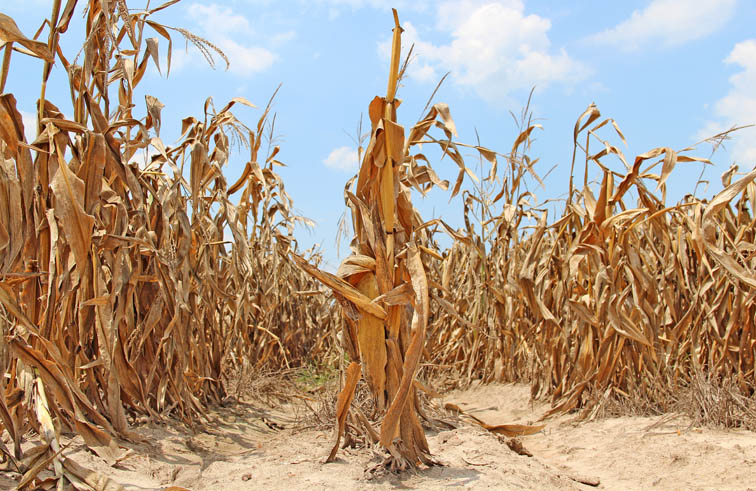July 27, 2012

With harvest time not far off for many Arkansas crops, anxiety over this year’s yields is expanding into next year’s planting.
A third of Arkansas is covered by “exceptional drought,” the most intense category of dryness, according to the U.S. Drought Monitor map issued Thursday (July 26).
In Morrilton, Randy Pettingill had been irrigating corn and soybeans out of the local water utility lagoons, but now, with so little water, that avenue is closed to him.
Pettingill, “told me that if we didn’t get some rain soon, that water would be shut off by Aug. 1,” said Kevin VanPelt, Conway County Extension agent, adding that Pettingill sank a well as his Plan B for irrigation. “He was right.”
Pettingill said the well produces about 850 gallons an hour, where the lagoon produced 1,300.
“You’re fighting a losing battle,” he said.
“It’s been a long summer,” he said, and with a chance of rain in Thursday’s forecast, “I’ll take anything. I don’t care if it comes a flood.”
Pettingill worries what might happen to next year’s crops if the rains don’t come later this year. If the water sources “don’t charge back up over the winter, there is a time when you have to ask, ‘will it work?’”
Exceptional drought covered 33.64 of the state, up from last week’s 11 percent. Much of the area expanded from the Arkansas River Valley in to north-central and through the Ouachita mountains into southwest Arkansas, including all of Cleburne, Conway, Faulkner, Pope, Perry, Newton, Searcy, Stone, Van Buren, and White counties and parts of Baxter, Boone, Carroll, Clark, Grant, Hot Spring, Howard, Independence, Izard, Jackson, Johnson, Logan, Lonoke, Madison, Marion, Montgomery, Prairie, Pike, Polk, Pulaski, Saline, Sevier, Woodruff and Yell counties. In far northeastern Arkansas, most of Clay and parts of Greene counties were also added to the exceptional drought category.
Extreme drought, the second most intense category, also increased its hold from 65 percent in last week’s map to 76 percent this week. Only a small sliver or Columbia County on the Louisiana border has the least intense category of drought.
Flash drought
The “flash drought” that has rapidly gripped parts of Arkansas and driven the life out of the state’s pastures is also drying out stock and irrigation ponds, creeks and rivers. Water tables are declining rapidly, especially in western Arkansas and the Arkansas River Valley.
As of July 7, the Fourche La Fave at Gravelly in Sebastian County was at its lowest level ever. At Houston in Perry County, the Fourche La Fave was at its second lowest level, the National Weather Service said.
“I inherited the old family farm and this is the first time this well has gone dry,” said Don Rodgers, president of the Crawford County Cattlemen’s Association. “The water table is being depleted rapidly and the ponds are down half or lower. It’s scary, but it’s the nature of the business.”
While cattle producers have been the hardest hit, poultry producers are beginning to feel the drought too, said Susan Watkins, Extension poultry specialist.
“The heat has been tough on farmers worried about water shortages for their poultry farms,” she said. “It’s not epidemic, but it is a concern with the drought that surface water sources such as ponds are drying up and with the heat some wells are having trouble keeping up with the required volume for raising big birds and cooling with the evaporative cool cells.
“Many poultry farmers that are currently using municipal or rural water are being asked to go off the systems because the suppliers can’t keep up with the demand of the poultry farms and their other customers.”
The pressure on water supplies has prompted at least one group of farmers to ask Watkins to give a presentation on above-ground water storage options.
Last year, some in agriculture were comparing the drought to 1980. In 1980, “old timers always compared the drought to 1954,” said Brent Griffin, Prairie County Extension staff chair. Some are now comparing the current drought to the Dust Bowl days of the 1930s.
“If not for the irrigation implemented since 1980” the picture would be much worse,” Griffin said.
A PDF of the new drought map can be seen here.
For more information on coping with drought, visit Arkansas Drought Resources or contact your county Extension office.
You May Also Like




